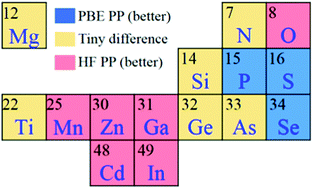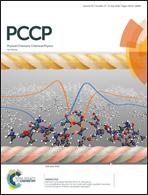Effect of Hartree–Fock pseudopotentials on local density functional theory calculations†
Abstract
Density functional theory (DFT) can run into serious difficulties with localized states in elements such as transition metals with occupied d states and oxygen. In contrast, including a fraction of the Hartree–Fock exchange can be a better approach for such localized states. Here, we develop Hartree–Fock pseudopotentials to be used alongside DFT for solids. The computational cost is on a par with standard DFT. Calculations for a range of II–VI, III–V and group-IV semiconductors with diverse physical properties show an observably improved band gap for systems containing d-electrons, pointing to a new direction in electronic theory.



 Please wait while we load your content...
Please wait while we load your content...
